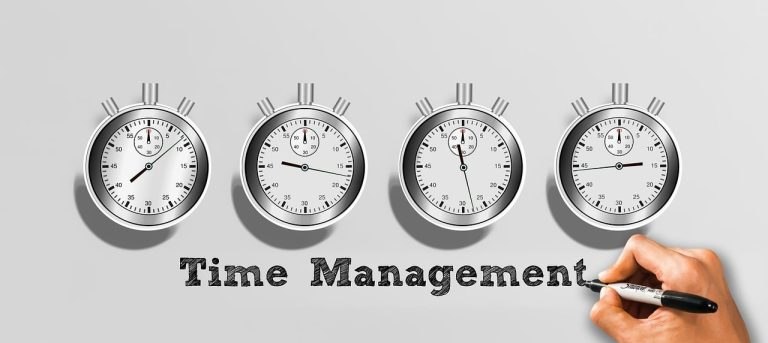Meetings are an inevitable part of working life, but unfortunately, research shows that over half of all meeting time is often wasted. For an average employee attending 61 meetings a month, this means roughly 31 hours are spent in unproductive meetings. Luckily, there are some simple tips and strategies that can help you cut down on wasted time and make meetings more effective.
Tip #1: DON’T MEET!
This is perhaps the most effective tip. Use alternative communication tools like email, intranet posts, or short reports instead of gathering people for meetings that aren’t necessary. Every meeting that can be avoided, should be avoided. Before scheduling a meeting, consider whether the information could be communicated just as well through another channel.
Set Clear Goals and an Agenda
Setting clear goals before the meeting is crucial. It’s better to have many short and focused meetings than a few long ones. Create an agenda that outlines the purpose of the meeting, lists the topics to be covered, and specifies who is responsible for each item. A well-prepared agenda distributed in advance ensures the meeting stays on track and allows everyone to prepare beforehand.
Come Prepared
Meetings are more effective when participants have a chance to prepare in advance. This leads to more focused and constructive discussions. Also, remember to conclude each discussion with concrete actions to be followed up after the meeting. In video meetings, it’s helpful to start with a quick round of introductions, so everyone gets to say something and “warm up” before diving in.
Evaluate the Meeting Process
After the meeting, take the time to reflect on what worked well and what could be improved for next time. This contributes to continuous improvement in how meetings are run.

Google’s Meeting Culture: A Case Study
Google is known for its unique and efficient meeting culture, designed to promote productivity, creativity, and collaboration. Here are some of the key practices Google follows:
- Strict Time Limits
Google strives to keep meetings short and to the point. Typically, meetings last 30 minutes or less. This forces participants to focus on the essentials and avoid unnecessary small talk. - Clear Agendas
Every meeting must have a clear, defined agenda. This helps participants prepare and ensures the meeting has a clear direction. Agendas are distributed in advance so everyone knows what will be discussed. - Decision Focus
Google emphasizes that meetings should lead to concrete decisions. It’s about moving from discussion to action, with each decision assigned to a responsible person and a deadline. - Open Communication
Openness and honesty are core principles in Google meetings. Everyone should feel free to share their opinions, and critical thinking and challenging ideas are encouraged. - Data-Driven Decision Making
Google bases discussions and decisions on data. Participants are expected to back up their arguments with facts and analysis. - Use of Technology
Google leverages its own technology, such as Google Meet and Google Docs, to enhance meetings. Collaborative documents updated in real time ensure that everyone has access to the latest information during the meeting. - Who, Why, and What
A typical Google meeting answers three questions: Who needs to be in this meeting? Why are we having this meeting? What do we want to achieve? If these questions can’t be answered clearly, the meeting is usually shortened or canceled. - “No Meeting Days”
Google has also experimented with “no meeting days,” where no meetings are scheduled, allowing employees to focus on individual work without interruptions.
These practices help Google maintain a meeting culture that is focused, productive, and aligned with the company’s goals of maximizing efficiency.

General Meeting Tips
- Stick to the Time: Ensure the meeting stays within the planned timeframe.
- Meeting Purpose: Always remember why the meeting is happening.
- The Golden Rule: Praise publicly, criticize privately.
- Group Pressure: Be mindful of groupthink and remember that there are no stupid questions, thoughts, or ideas.
Body Language and Behavior in Meetings
This is often an overlooked factor that can significantly impact meeting dynamics. Being aware of your body language, such as maintaining an open posture and eye contact, can foster a positive atmosphere.
- Openness: Keep arms and legs uncrossed and unbutton your jacket to signal honesty.
- Lean Forward: Shows interest and engagement.
- Mirroring: Subtly adapt your body language to match those you are speaking with to build a connection.
- Eye Contact: Direct eye contact builds trust. In video meetings, look directly into the camera lens to simulate eye contact. Keep in mind that cultural differences can affect how eye contact is perceived.
How to Stand Out in Meetings
- Stay Positive: Focus on solutions and make more positive than negative comments. A good rule of thumb: don’t criticize unless you have a well-thought-out reason and preferably at least one alternative solution to offer.
- Include Everyone: Address the entire group and make sure everyone feels included. Especially in video meetings, it’s often better to call on individuals directly rather than asking open questions to the whole group.
- Be Concise: Be thorough, but avoid speaking so long that you lose people’s attention. Balance your use of slides and talking points.
- Show Interest: Lean in, nod, and maintain eye contact.
Common Meeting Pitfalls to Avoid
By being mindful of typical meeting disruptors like side conversations and unnecessary phone use, you can help keep the meeting focused and productive.
- Side Conversations: Avoid talking to others during the meeting, as it’s distracting.
- Phones: Make sure your phone is on silent, and don’t answer calls unless it’s an emergency.
- Unnecessary Breaks: Wait for a natural pause before leaving the room.
By following these tips, you can reduce unnecessary meeting time and increase productivity for both yourself and your team.
Sources:
- Jeff Wuorio, “How to Buy and Sell Just About Everything”
- Kuttisme.no
- Effectivemeetings.com
- ChangingMinds.com
- Bodylanguagetraining.com





